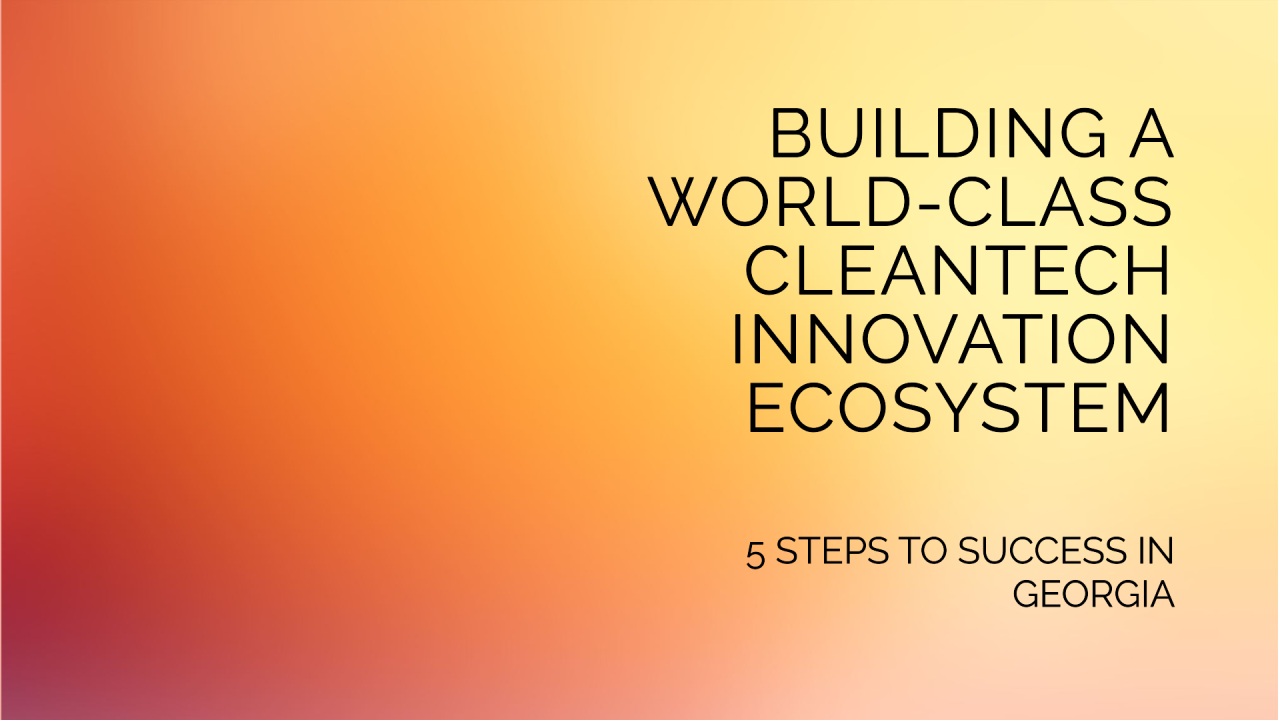Innovation ecosystems underpin every leading innovation hub, district, and region. They are complex, multi-tiered collections of tightly and loosely connected organizations that collaborate to transform ideas to products/business by ensuring access to resources and capital. Ecosystems are forged through collective action and require years to mature. As a result, the most successful ecosystems start with a clear aspiration and forward-looking goals that create an identity around which stakeholders rally.
An identity is required for budding ecosystems to recruit and activate collaborators. Busy leaders, professionals, students and innovators will invest meaningful time in ecosystem building, if they believe that the ecosystem will make it easier to succeed in their day job. A well-crafted identity must communicate three things to attract collaboration: the ecosystem’s reason for existence, its unique value proposition, and its short and long-term goals. The identity for an ecosystem also has be highly compelling because the investment in ecosystem building takes some time to payback.
What Does Good Look Like?
The good news is that it is easy to find examples of ecosystems with compelling and well articulated ambitions. Boston’s cross-sector innovation ecosystem identity is based on its ambition.
To define its place, people, and purpose as the capital of scientific revolution.
What makes this a winning ambition is that it is bold, easily to understand, and 100% believable. Building on the strength of its universities and leading research institutions, the city crafted an identity it can use to rally innovators, investors, executives and developers across sectors behind its ecosystem building initiatives. A bold ambition has the added benefit of being high leverage. Even with little direct action, organizations in and around Boston have a good understanding of the city’s direction allowing them to implement their own strategies, which are aligned with this identity.
Where is Georgia Today (Fall 2024)?
Georgia’s cleantech innovation community does not lack in ambition or energy. Since the beginning of the year a there has been significant growth and accomplishment, including:
- Inaugural ATL Cleantech Connect Event Series
- Launch of the Cox Cleantech Accelerator powered by gener8tor
- DOE EPIC grant win by Alpha-X
- Publication of “Build Like it’s the End of the World” by cove.tool co-founders Sandeep Ahuja and Patrick Chopson
- Collaboration between Fusen World and GT’s Strategic Energy Institute on the CleanTech Startup Challenge
- Georgia Tech’s launch of a roll-to-roll manufacturing pilot line
- Cloverly’s recognition as top B2B startup in Atlanta
This list is by no means exhaustive either (please comment with what we missed).
However, the ecosystem does not yet have a crisp articulation of an ambition and identity that can serve as the north star for ecosystem participants in the same way that Boston does. This identity will only accelerate progress in the ecosystem by avoiding duplicative efforts, stacking resources and ultimately drawing more attention to its success.
What is Next?
An identity needs to be created that boldly defines what the cleantech innovation ecosystem in Georgia is all about and a lead organization needs to coordinate the effort.
The Georgia Cleantech Innovation Hub was founded expressly for this purpose. As an independent 501c3 organization, GACIH is well positioned to work between the influential stakeholder groups, gain consensus, and craft an identity for ecosystem. While not created with a mandate, the organization’s mission gives it the freedom to focus its attention on growing the innovation ecosystem, free from competing interests.
Our ask of existing ecosystem players is to engage with us and allow us to work on your behalf to get this done.
How Do We Know When We Get There?
The ecosystem is not far from completing this step. Successful completion requires the following:
- Creation of a clear, compelling identity statement for Georgia’s cleantech innovation ecosystem
- Development of unique value proposition to innovators and ecosystem participants
- Articulation of short and long-term success and health metrics for the ecosystem
Fortunately, as discussed in the previous post, there is a critical mass of engaged stakeholders ready to participate in the effort and plenty of ambition that just needs to be distilled into a compelling identity.
Stay tuned for the next installment on Selecting a Strategy. We will continue to publish posts on step over the next couple of weeks. If you like this please consider following us on LinkedIn, subscribing to our newsletter, or making a donation.
